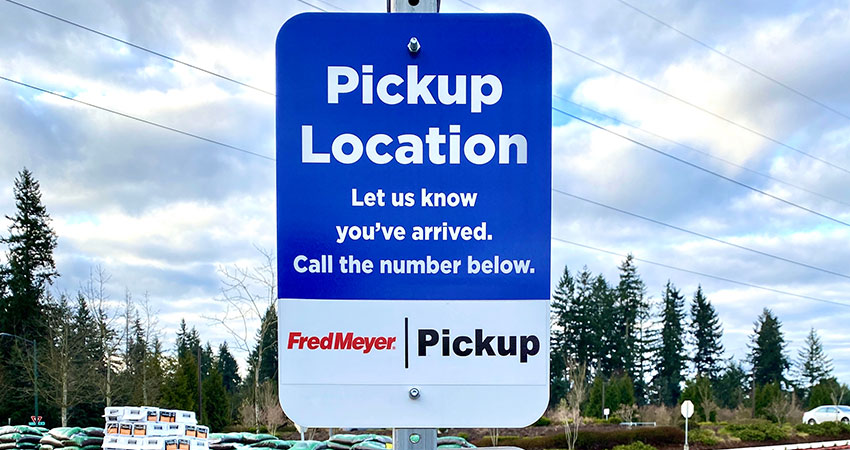E-grocery sales in the U.S. surged back to $9.3 billion in March, the same level as in January and up 43% from $6.5 billion a year ago, after dropping to $8 billion in February, according to the latest data from Mercatus and Brick Meet Click.
That year-over-year growth in sales happened even though 7% fewer households – 69.3 million vs. 74.5 million – placed one or more e-grocery order this past month vs. a year earlier.
“A year since COVID-19 changed how we live, work and shop, online grocery demonstrates continued strength and impressive staying power,” said David Bishop, a partner with Brick Meets Click, in a release. “The monthly active user base remains robust, average order values are at similarly elevated levels and order frequency has gone up.”
Within the 7% decline in households making repeat purchases is an interesting shift in fulfillment modes. The drop was attributed entirely to 27% fewer consumers using “contract or common carriers” for ship to home, such as UPS and FedEx, while delivery overall by startups like Fresh Direct, Instacart and DoorDash increased 23%. Curbside pickup also increased, by 12%.
Over the past year, ship to home has dropped 19% in terms of order share to delivery and pickup, with the latter the most common way that consumers get their e-grocery orders.
In March 2021, monthly active users placed an average of 2.8 e-grocery orders, up slightly from 2.5 a year ago, the 12% increase being attributed to the fact that many were still shopping in grocery stores before the first lockdowns occurred in mid-to-late March 2020.
Average order value (AOV) for delivery and pickup orders was $84 last month, unchanged from a year earlier, while declining 6% to $49 for ship to home. In March 2020, AOV had already increased by 16% to 18% from pre-pandemic levels as the e-grocery boom began in earnest.
The survey of 1,811 adults was conducted from March 26-28, 2021. Results were adjusted based on internet usage among U.S. adults to account for the nonresponse bias associated with online surveys.

